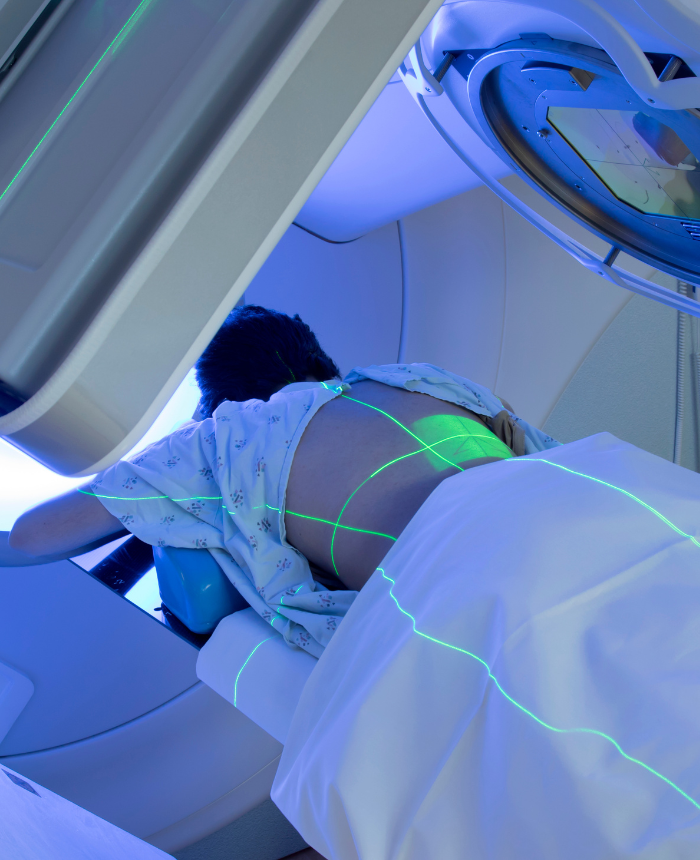
RADIATION TREATMENT
Stereotactic body radiotherapy
(SBRT)
Stereotactic body radiotherapy (SBRT), also called stereotactic body radiation therapy, is an advanced type of radiation therapy that delivers high doses of radiation using several beams of varying intensity aimed at a very targeted area of the body. Like other forms of radiation therapy, SBRT works by damaging the DNA inside tumor cells. This damage causes the tumor to stop making new tumor cells, which in turn causes the tumor to shrink.
SBRT is delivered using a linear accelerator. Based on your CT simulation or other imaging, your doctor will use a computerized system to shape the radiation beams to match the 3-D outline of your tumor and then collaborate with medical physicists to develop a treatment plan.
The main benefit of stereotactic body radiation therapy is that, unlike other types of radiation therapy, the course of treatment is short. Rather than taking five days a week for several weeks, SBRT is given over the course of one to five sessions.
Stereotactic body radiation therapy is used to treat small, early-stage lung cancer, head and neck cancers, prostate cancer, and both malignant and benign (non-cancerous) tumors in other locations including the liver, pancreas, and spine.
What to expect during stereotactic body radiation therapy
As our linear accelerator begins delivering your treatment, you’ll see or hear the equipment moving. You’ll hear a lot of clicking and buzzing throughout the treatment. You might see colored lights if the treatment area is near your head. And there will be a strange smell in the air—that’s the ozone produced by the linear accelerator, and it’s completely normal.
Our stereotactic body radiation therapy sessions are 30 minutes long for a single site of treatment. For this treatment type, you can expect to be in and out of our treatment center in one hour per day maximum. The radiation doesn’t hurt, burn, or sting when it enters your body, but if you get uncomfortable because of the position you’re in during treatment, let your care team know. They can pause treatment to help make you more comfortable.
A stereotactic body radiation therapy treatment schedule is different from a typical radiation therapy treatment regimen. Due to the high intensity of the radiation dose, only one to five treatments are given over a period of 1 to 10 days. The total number of treatments you will get depends on factors including the type of cancer you have and the size and location of your tumor.
Most of our patients will be able to complete stereotactic body radiation therapy treatment without any restrictions—meaning that you can continue to live your regular activities even while going through treatment. If you do need to restrict your activities in any way, your radiation care team will let you know.
Ways to receive radiation
Radiation as a sole treatment modality
The type and stage of cancer, a patient's medical history, and more all go into the decision of whether and how to use radiation therapy. Radiation therapy can be used on its own to cure or treat early-stage cancer or to prevent a previous cancer from spreading to another area of the body. Radiation therapy may also be used to treat cancer that has spread too much to be cured, but for which some of the symptoms may be relieved. This is known as palliative radiation.
Radiation in combination with surgery
Physicians may recommend radiation prior to surgery to shrink the size of the tumor or when the location restricts surgical options. Radiotherapy can also be used during surgery (intraoperative radiation) to get straight to a cancer without passing through the skin. Patients may be advised to receive radiation after surgery to remove remaining cancer cells. Sometimes radiopharmaceutical therapies are also combined with radiation and surgery; for example, if you have metastatic prostate cancer, your treatment could include agents like radium 223 and Pluvicto, also known as lutetium 177.
Radiation with chemotherapy
When radiation is used in combination with chemotherapy, the treatment is called chemoradiation. Chemotherapy uses anti-cancer drugs to destroy cancer cells, and radiotherapy uses high-energy rays to destroy cancer cells. Chemotherapy can also be used as a radiosensitizer, enhancing the killing effect of radiation therapy on cancer cells.
Radiation to relieve symptoms
Radiation therapy may be recommended to relieve symptoms by reducing the size of the tumor and its effects on surrounding organs and tissues.
Radiation Therapy Resources
Here are some resources to help you better understand your treatment; how to prepare for treatment; and what to expect before, during, and after treatment occurs.
What Foods Should I Eat if Radiation Causes Nausea?
The best foods to eat if radiation causes nausea include those that are bland, easy to digest, and nutritionally dense. Read more to learn which foods to avoid.
Choosing the Right Radiation Oncology Center for You
You get to choose where to receive radiation therapy. But how do you know what the right choice is for you? Here are some top things to consider.
Recovering From Head and Neck Cancer
The recovery time for head and neck cancer varies by patient. Here, we share some of the top factors that can impact your recovery time.
Types of Radiation Therapy
Image-guided radiation therapy (IGRT)
IGRT combines 3-D images with 3D or intensity-modulated radiation therapy to pinpoint and treat cancerous tumors.
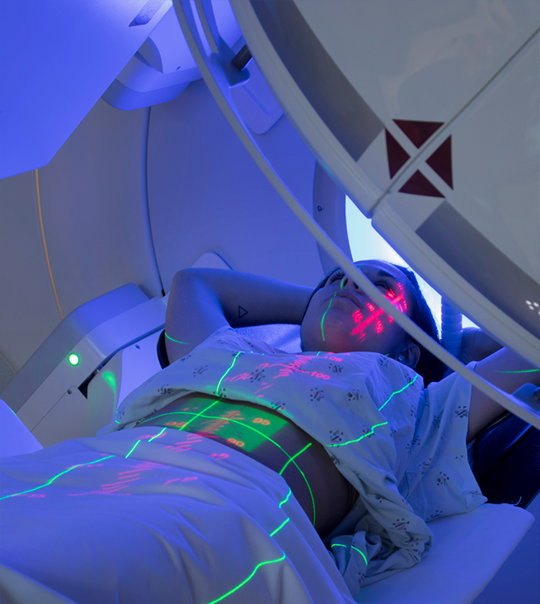
Intensity-modulated radiotherapy (IMRT)
IMRT is an advanced form of external radiation treatment that allows precise targeting of tumor cells.
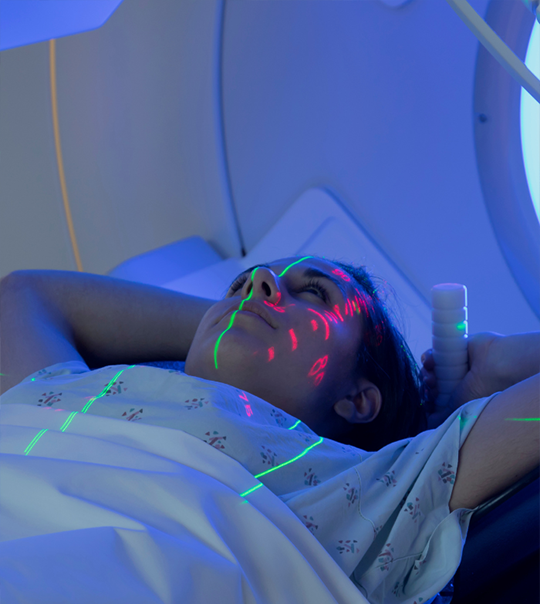
Image-guided radiation therapy (IGRT)
IGRT combines 3-D images with 3D or intensity-modulated radiation therapy to pinpoint and treat cancerous tumors.

Intensity-modulated radiotherapy (IMRT)
IMRT is an advanced form of external radiation treatment that allows precise targeting of tumor cells.

Stereotactic body radiotherapy (SBRT)
SBRT is an advanced type of radiation therapy that delivers high doses of radiation aimed at a very targeted area of the body.
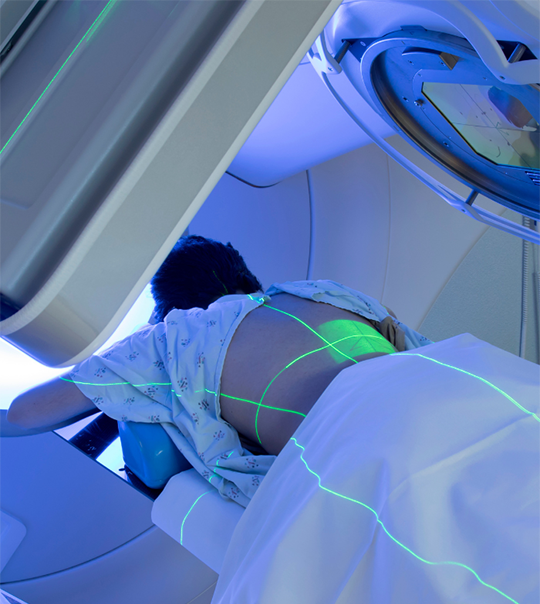
3-D conformal radiation therapy
3-D CRT uses technology to capture 3D representations of the tumor and surrounding organs.
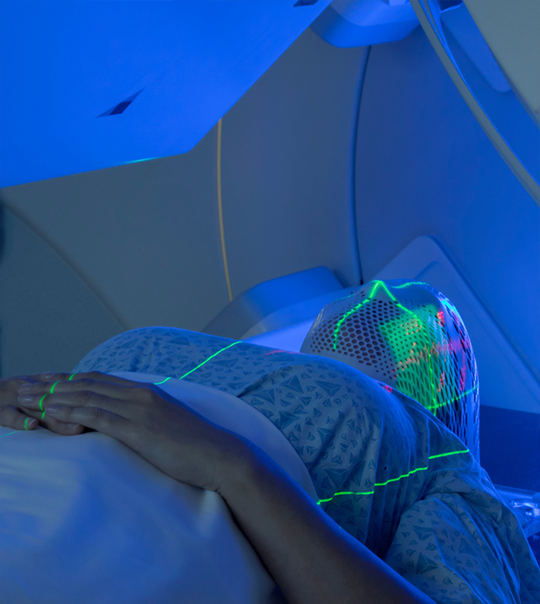
Stereotactic body radiotherapy (SBRT)
SBRT is an advanced type of radiation therapy that delivers high doses of radiation aimed at a very targeted area of the body.

3-D conformal radiation therapy
3-D CRT uses technology to capture 3D representations of the tumor and surrounding organs.

Schedule Your Appointment Today
If you are referred for radiation therapy during your cancer care, you get to choose where to receive treatment. We are here to support and encourage you—call us today to schedule your first appointment with one of our radiation oncologists at the cancer center nearest to you.



